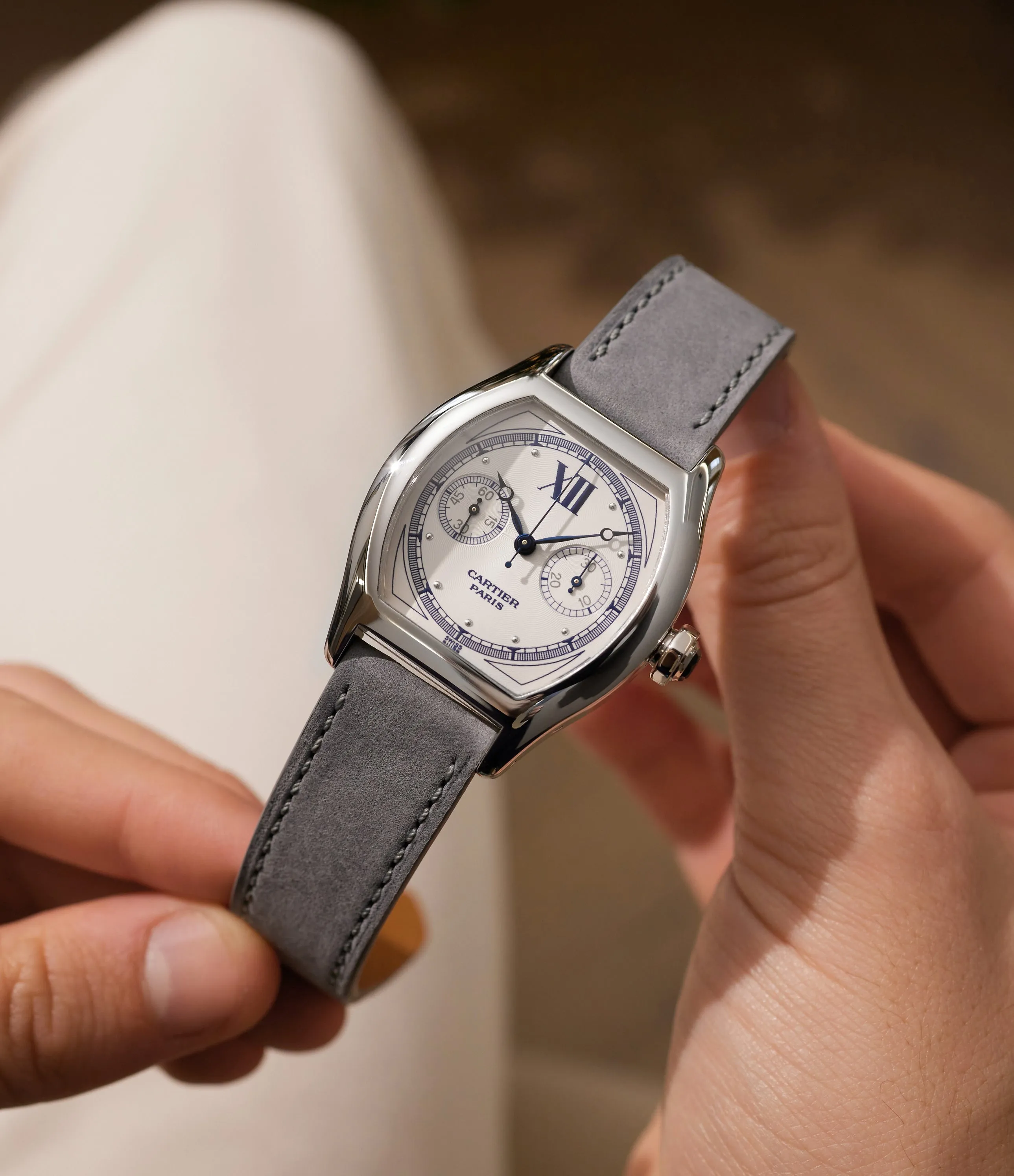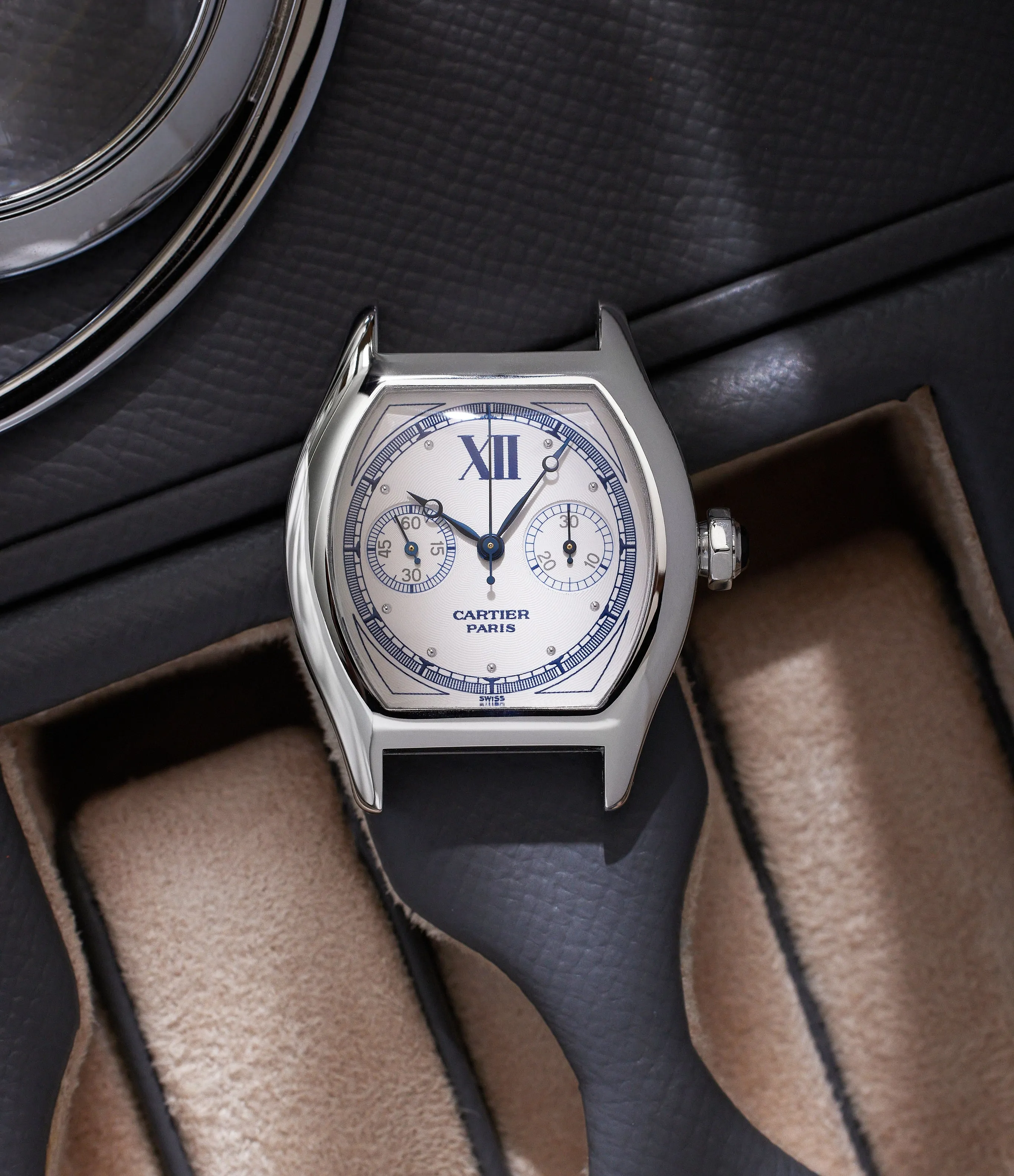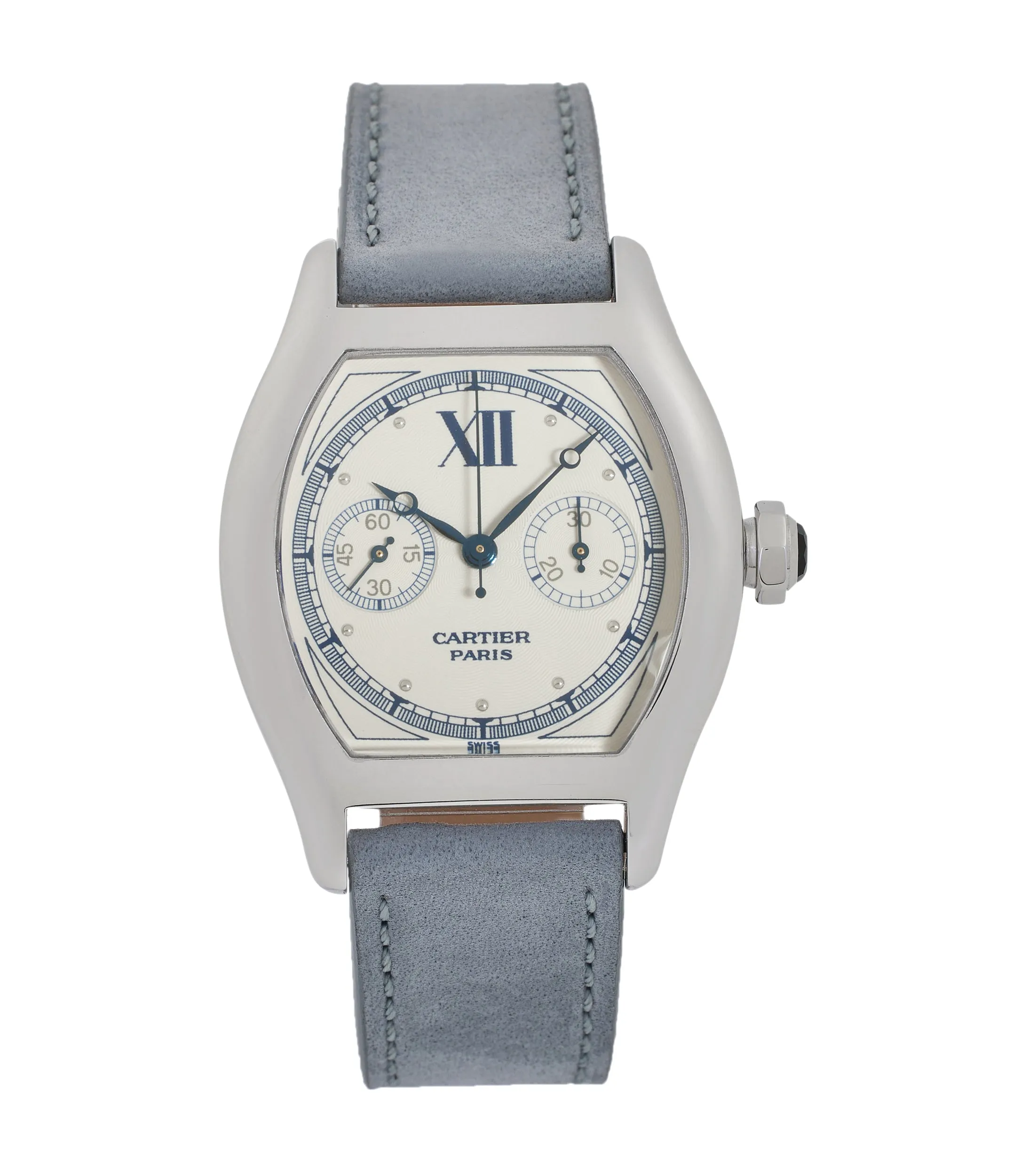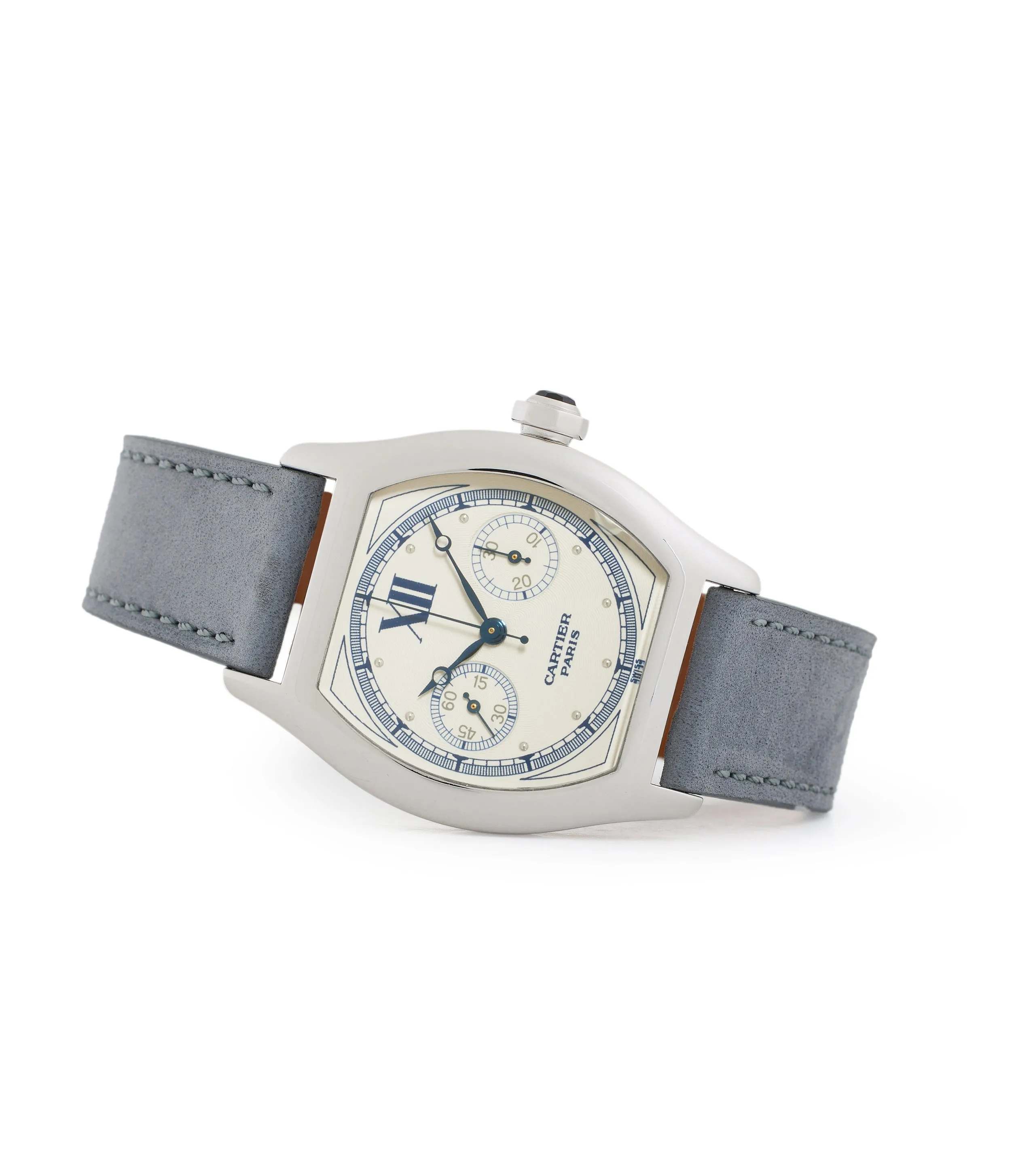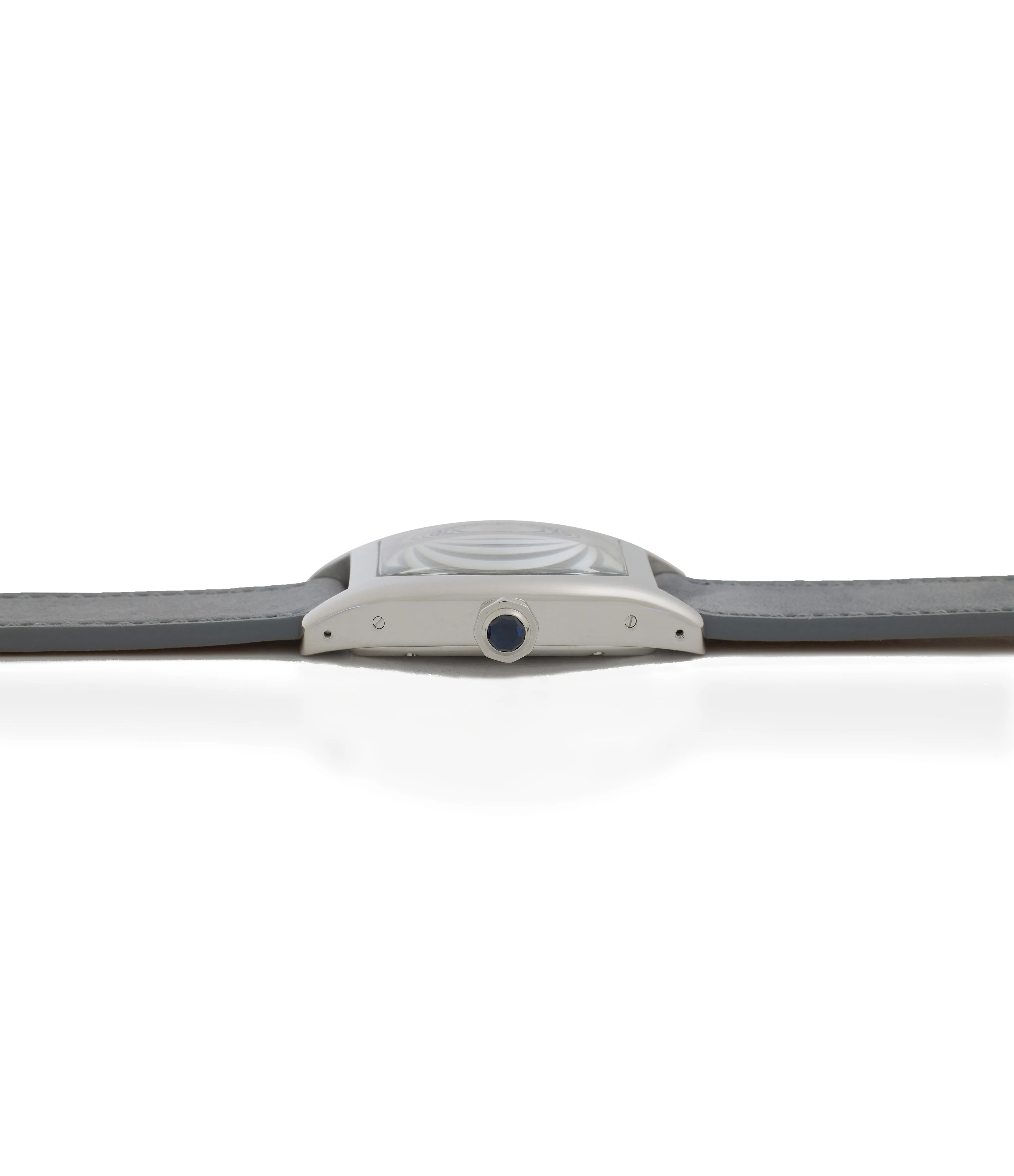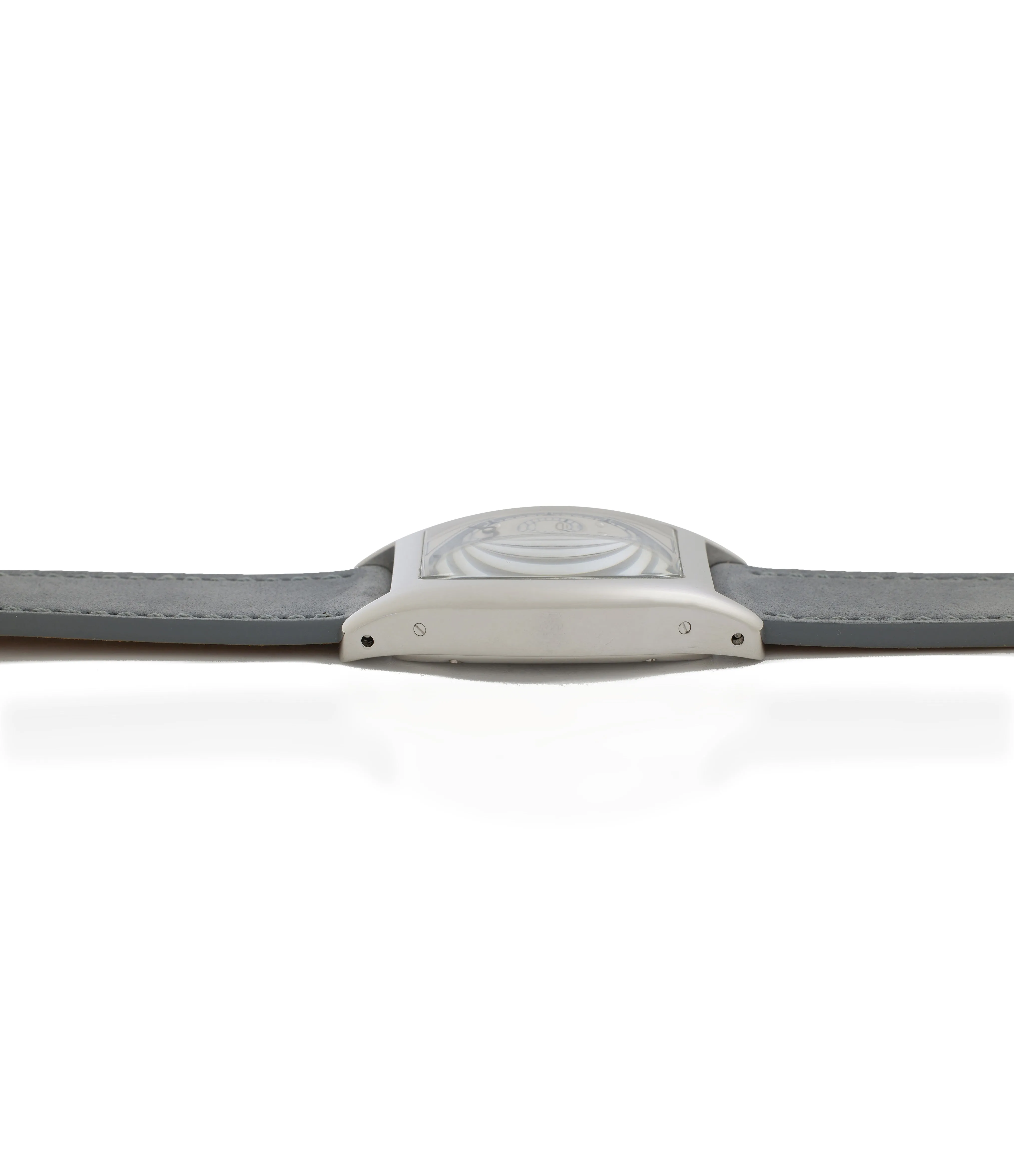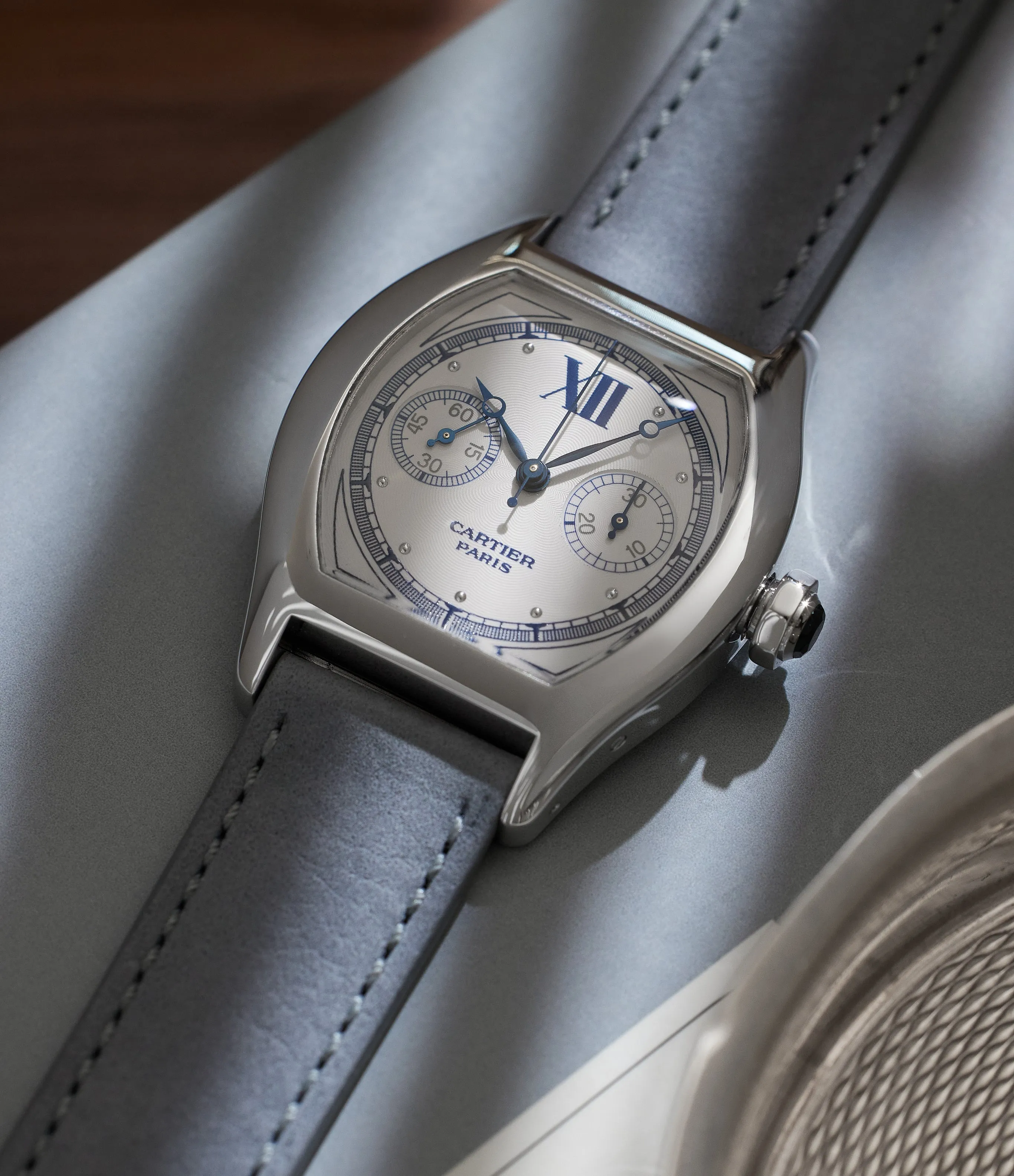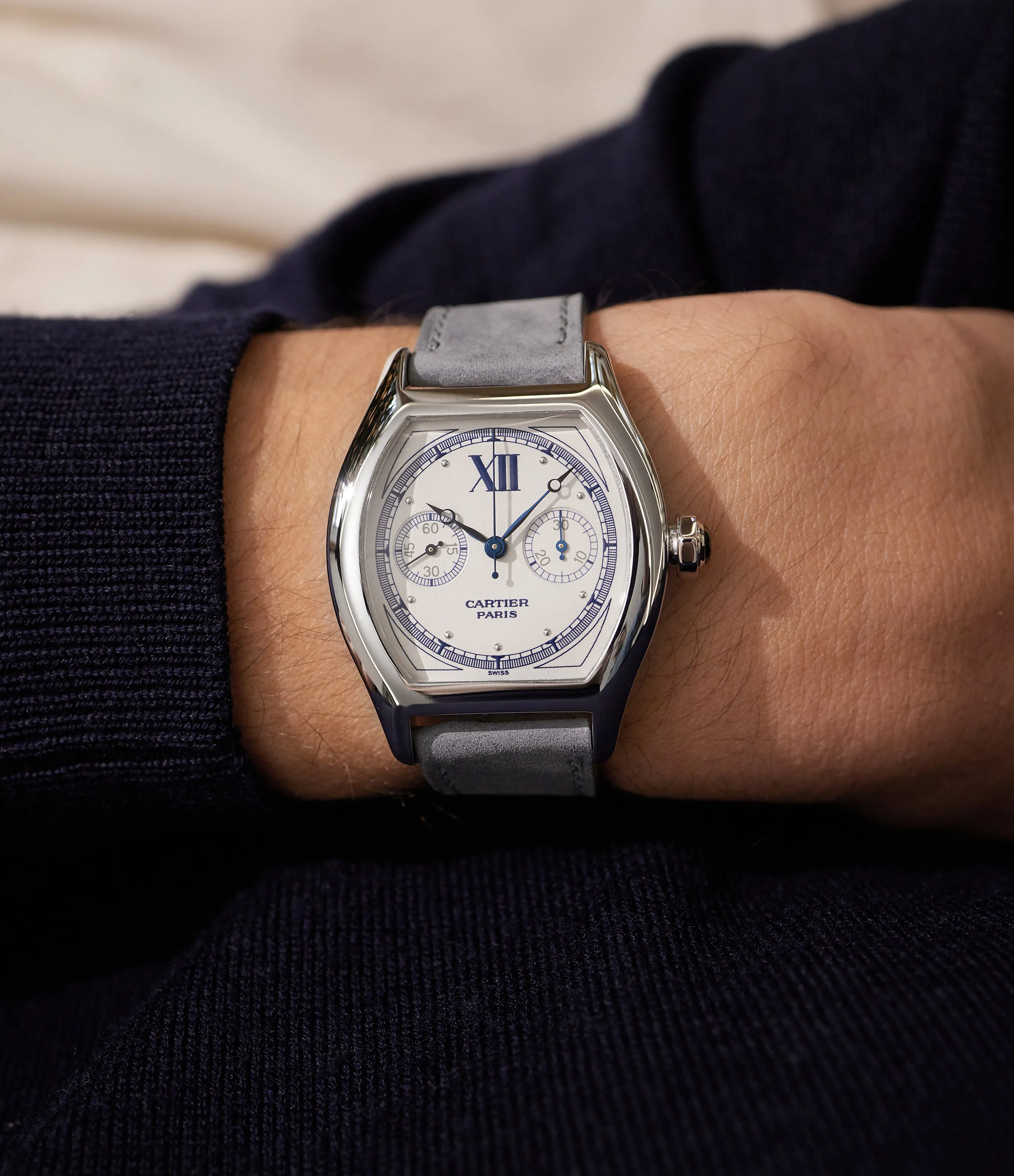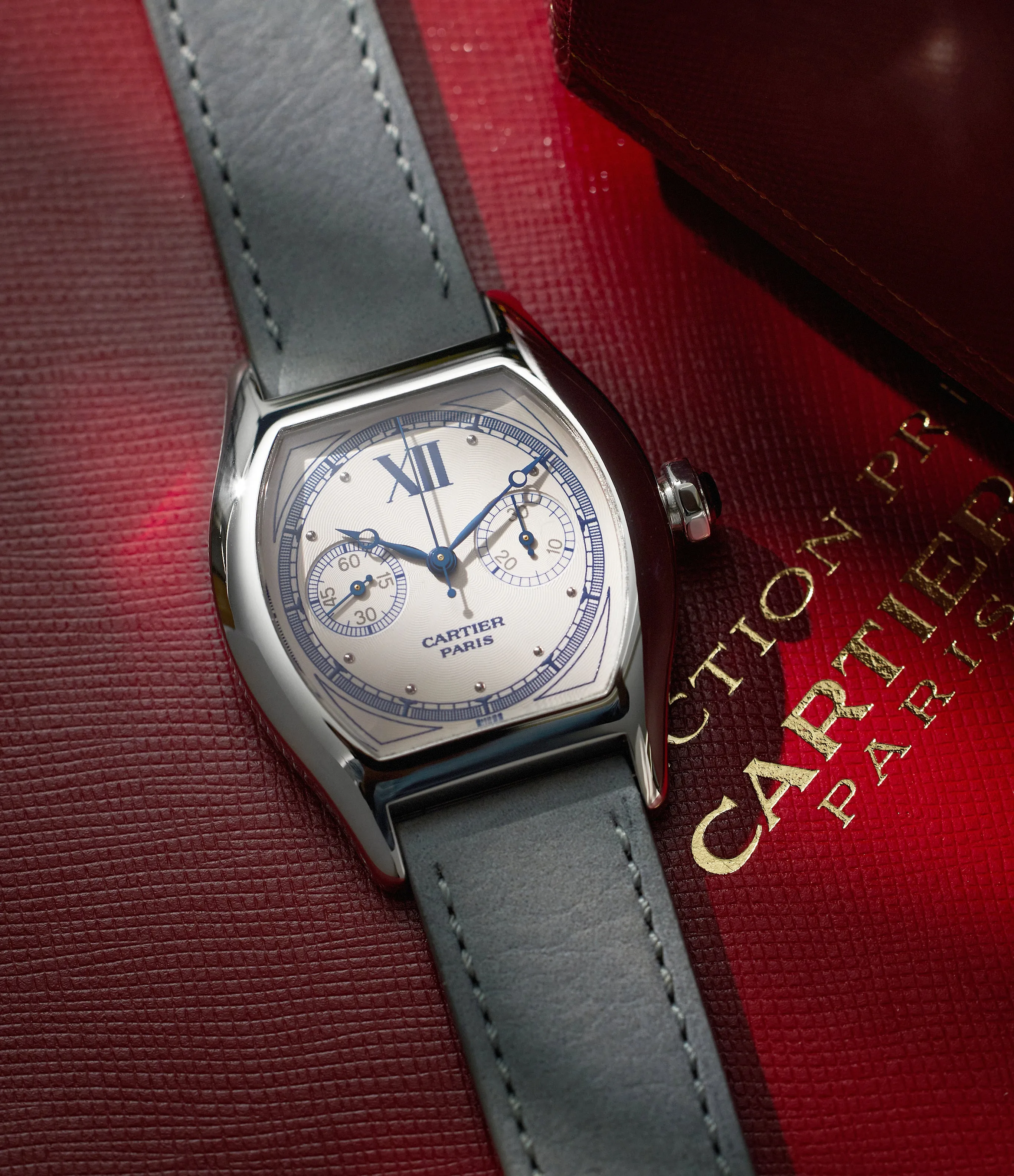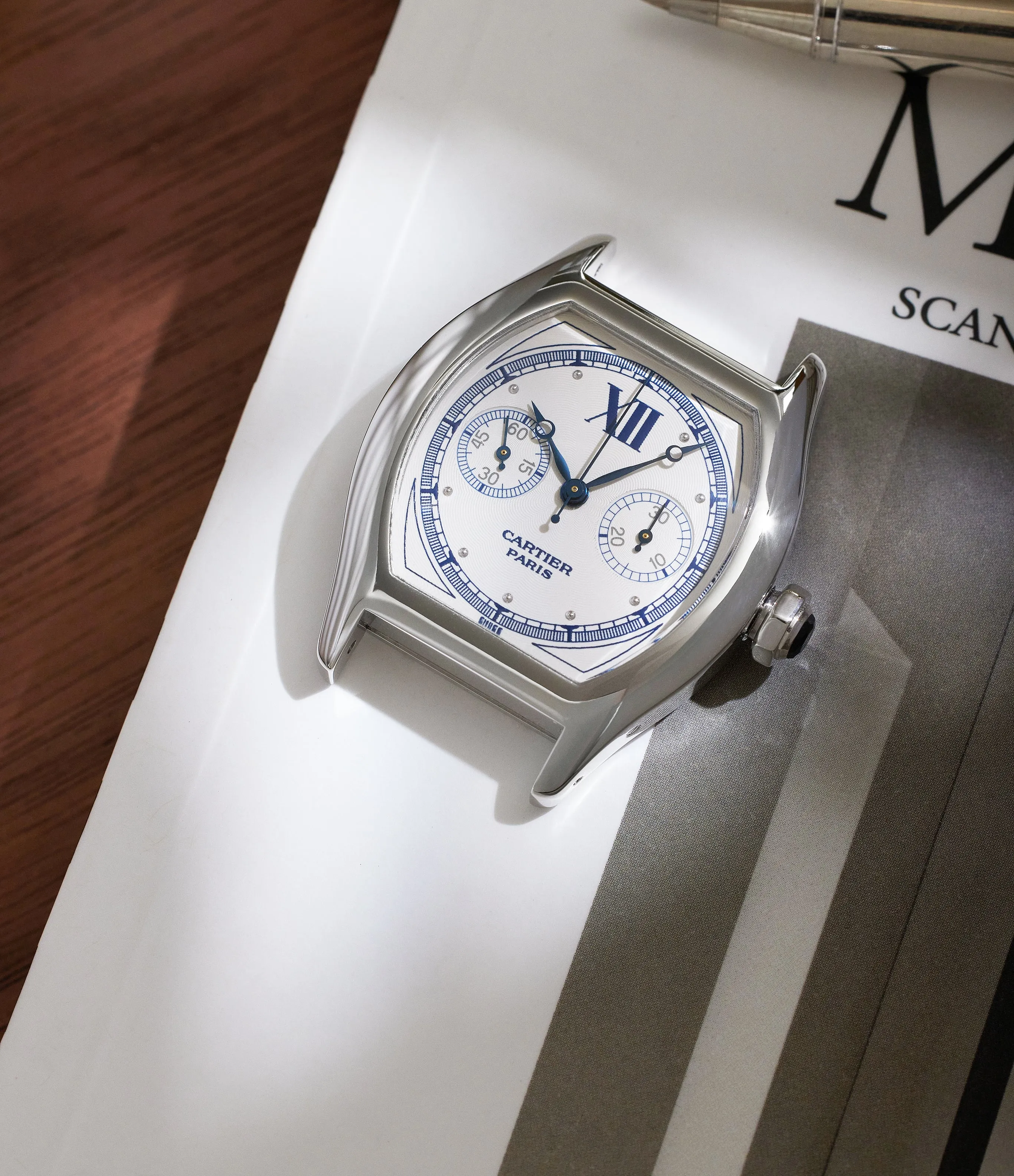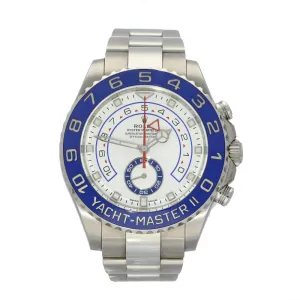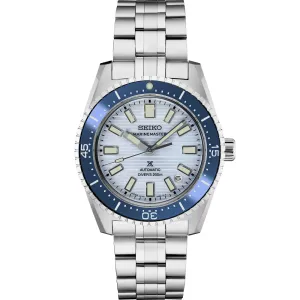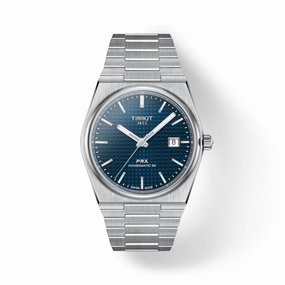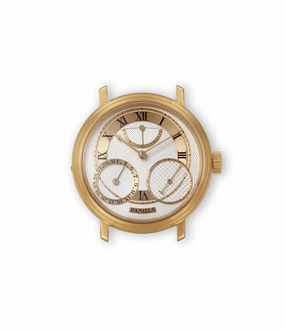The classic Tortue Monopoussoir was introduced in 1999, as a part of the Collection Prive Cartier Paris, in?three differing case-metals: white gold, yellow gold, and pink gold. Each bears its own vintage-inspired dial, with a mechanical movement developed by some of independent watchmakings finest.
THE COLLECTION PRIVE CARTIER PARIS
In the last decade of the 20th century, the industry was still recovering from the impact of the quartz crisis, with consumers just starting to redevelop an interest in mechanical watches. In the midst of this,?Cartier?aimed to reestablish its credibility as a true watchmaking manufacture. From 1998 to 2008, the?Collection Prive Cartier Paris?brought back some of the most iconic?Cartier?designs from the past century, from the??to the?,?combined with high quality mechanical movements. In many cases, these distinctive designs hadnt been produced for decades, speaking to the jewellers desire to place an increased focus on its heritage.
All the?Collection Prive Cartier Paris?- or?CPCP?for short - pieces housed high-quality mechanical movements, at a time when the jeweller was mostly associated with quartz. Not possessing the mechanical knowledge in-house,?Cartier?relied on a range of external suppliers, such as?Jaeger-LeCoultre,?Frdric Piguet,?Piaget?or??- a collaborative movement manufacture between?, Denis Flageollet and?. All the movements were manual-winding, rather than automatic, emphasising the traditional nature of this project.
All the?Collection Prive Cartier Paris?watches feature small, distinctive details, intended to set them apart. With the exception of the?Cintre,?all of them are signed Cartier Paris on the dial, a subtle nod to their vintage pieces. They also display a central rose motif just beneath the hands, which radiates into a classic guilloch. Even the subtle engravings on the caseback are reminiscent of what they used to do in the early 20th century. As for the manual-winding movements, these were finished in-house by?Cartier, with their interlaced double C pattern appearing across the collection.
Despite the brands global reach at the time, the?Collection Prive?models were produced in small quantities, with many explicitly limited to 50, 100 or 150 pieces. As for those that werent marked as part of a numbered series, evidence suggests that production often remained between 200 to 500 pieces. Eventually, partially due to difficulties and delays in getting parts from their various suppliers,?the?CPCP?program came to an end.
A Product of Collaboration
Created?by Louis Cartier in 1912, the Tortue was only Cartiers third wristwatch design, after the Santos Dumont and Tonneau. With?its unmistakable DNA and Cartiers timeless style, the model's?tortoise-inspired case quickly became a classic.
A reference point in the history of modern watchmaking, the Calibre 045MC that powers the Tortue Monopoussoir was produced by THA bauche. Founded in 1996, THA was a collaborative movement manufacture by , Denis Flageollet, the founder of , and , before their respective brands became household names. With this illustrious collection of watchmakers involved, there is little surprise that the Calibre 045MC is both technically and visually impressive. Reminiscing on the collaboration during a recent interview, Dennis Flageollet said,
"We were young, we had no doubts and we created incredible objects together that would be difficult to make today."
Having worked closely with the jeweller on some other projects, the?watchmakers suggested the project to Cartier, on the basis of re-creating a monopusher chronograph from the 1920s. According to Flageollet, the?heads of product at Cartier at the time did not have extensive knowledge of their heritage, yet the watchmakers behind?THA bauche felt compelled to realise the project.?
A Contemporary Design
Used only for the various Cartier Tortue Monopoussoir models, the?Tank Monopoussoir and De Bethune Monopoussoir, the Calibre 045MC uses a lever escapement. With a clutch system, the motion of the second wheel to the chronographs central wheel is activated by a double swivel pin, removing the "jolt" of the second hand which often occurs in chronographs operated by a lateral clutch. The resulting operation allows the hand to smoothly glide across the dial.
Beneath the curved crystal, a?modern-style guilloch dial replaces the design of the original model?from the 1920s, with the blued steel?Breguet?style hands and matching inky-blue minute track. An oversized "XII" numeral sits at 12 o'clock, with its dramatic proportions imbuing the design with a more contemporary?feel. This is balanced by the "Cartier Paris" signature at 6 o'clock, which is also rendered in the same blue tone. Overall, the dial design blends the best of vintage Cartier, with bolder colours and proportions, combining the past and the present.
The Set
This?Cartier?Monopoussoir?comes with its outer box, inner boxes, manual, and an unsigned?Certificate of Origin. Our nubuck strap and the original, corresponding?white gold?deployant buckle are also included.
To find out more about the?the Collection Prive Cartier Paris, you can read our??on the topic.
If sold within the United Kingdom, this?Cartier?Monopoussoir?Ref.?2396?will be subject to 20% VAT.?Viewings are currently suspended for the time being.
Closer look
| Brand: | Cartier |
| Model: | Monopoussoir?Ref.?2396 |
| Movement: | mechanical manual-winding Cal.?045MC |
| Functions: | chronograph, hours, minutes, sub-seconds |
| Features: | guilloch dial, display back,?blue steel hands |
| Case: | 43 x 35?mm 18-carat?white gold |
| Crystal: | sapphire front and back |
| Bracelet: | nubuck strap, white gold deployant clasp |
| Year: | c. 2000 |
| Box & papers: | outer box, inner boxes, manual, unsigned?Certificate of Origin |


